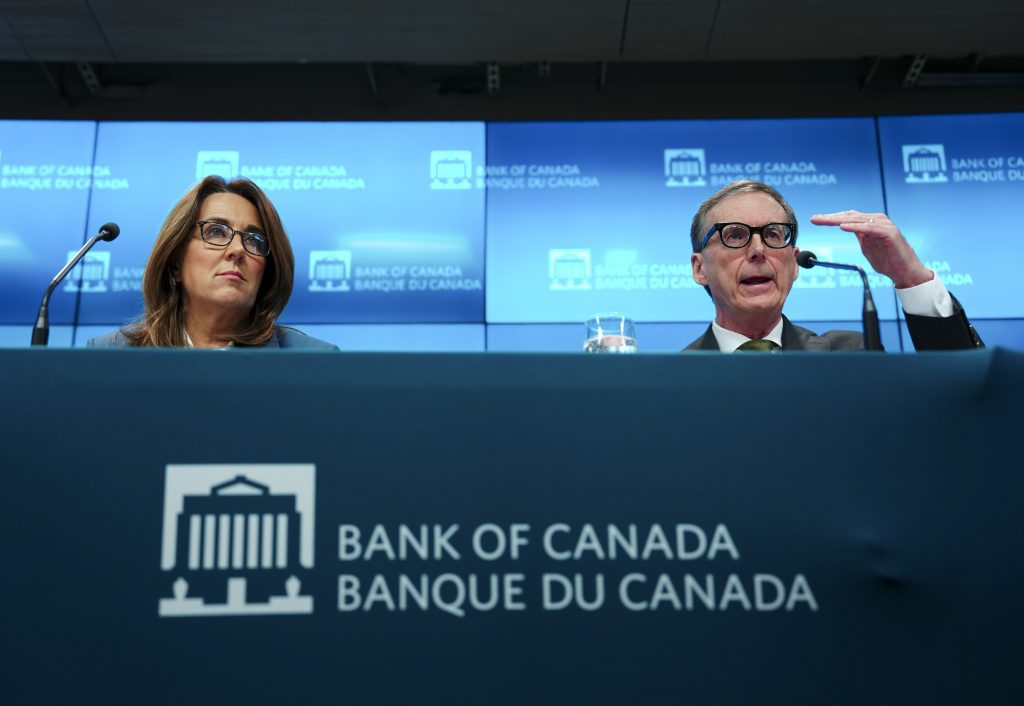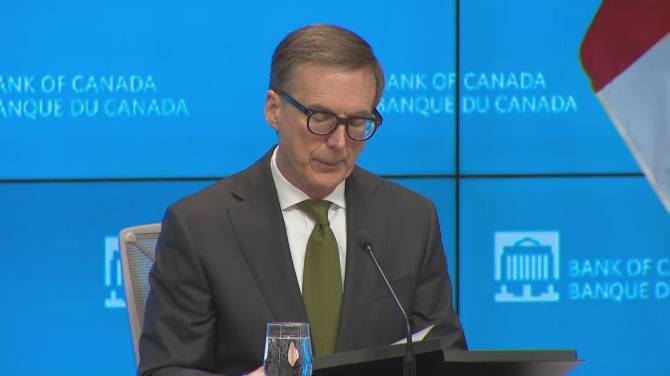The Bank of Canada's decision-making group appears to be gaining confidence that the central bank will be able to decrease its benchmark interest rate. interest rate sometime this year, but newly released documents indicate that monetary policymakers are worried about potential risks.
The Bank of Canada released the details of its March 6 interest rate decision, when it kept the policy rate unchanged at 5.0 per cent for the fifth consecutive time.
Officials at the Bank of Canada have not specified when the central bank can begin lowering borrowing costs, but governor Tiff Macklem has indicated that rates probably do not need to increase due to signs of a slowing economy and returning control. acknowledged that rates probably don’t need to move higher amid signs the economy is slowing and inflation is coming back under control.
During the discussion about its March 6 decision, the decision-making group agreed that if the economy continues to evolve
in line with the Bank’s projection, the conditions for rate cuts should materialize over the course of this year.
However, the discussion also mentioned a “diversity of views” within the group regarding when there would be sufficient evidence for rate cuts to proceed, and how to balance risks in the central bank's outlook.
The Bank of Canada's discussion highlighted the possibility of a resurgence in the housing market as one of the biggest risks.
Shelter price inflation is the main driver of overall inflation, which decreased further to 2.8 per cent year-over-year in February. Shelter prices rose to 6.5 per cent annual growth last month, up from 6.2 per cent in January, due to increasing rents and mortgage costs.
James Orlando, director of economics at TD Bank, told Global News on Tuesday that the Bank of Canada probably does not want to lower interest rates during the spring housing market, as cheaper borrowing costs could boost real estate activity and unintentionally drive up shelter inflation.
He also mentioned that, excluding shelter costs, annual inflation would already be back at the Bank of Canada’s two per cent target.
Some economists have suggested that as the Bank of Canada assesses how long its benchmark rate needs to remain elevated, it should consider more than just the impact of shelter inflation, which the central bank has noted is driven by structural supply gaps in the housing market.
However, the discussion indicates that the decision-making group is not willing to completely overlook shelter costs.
The governing council indicated that it would not overlook sources of inflationary pressure such as rent increases and other housing costs like property taxes, insurance, and repairs, despite the fact that shelter inflation might be solely driven by mortgage interest costs connected to the Bank of Canada’s own policy rate.
Council members also mentioned that indications of reduced pressure from wage growth and corporate pricing behavior were starting to show, but they agreed to wait for more data before being confident that these factors would not cause inflation to increase again.
The Bank of Canada's next decision on interest rates is scheduled for April 10. Most economists anticipate the central bank to begin lowering its policy rate around mid-year.
Meanwhile, the U.S. Federal Reserve kept interest rates unchanged on Wednesday, but policymakers suggested that they still anticipate a reduction of three-quarters of a percentage point by the end of 2024, despite slower expected progress toward the central bank's two percent inflation goal.
– with files from Reuters
The Bank of Canada's governing council states that the conditions for interest rate cuts should emerge this year, but the housing market poses a risk to the inflation outlook.




